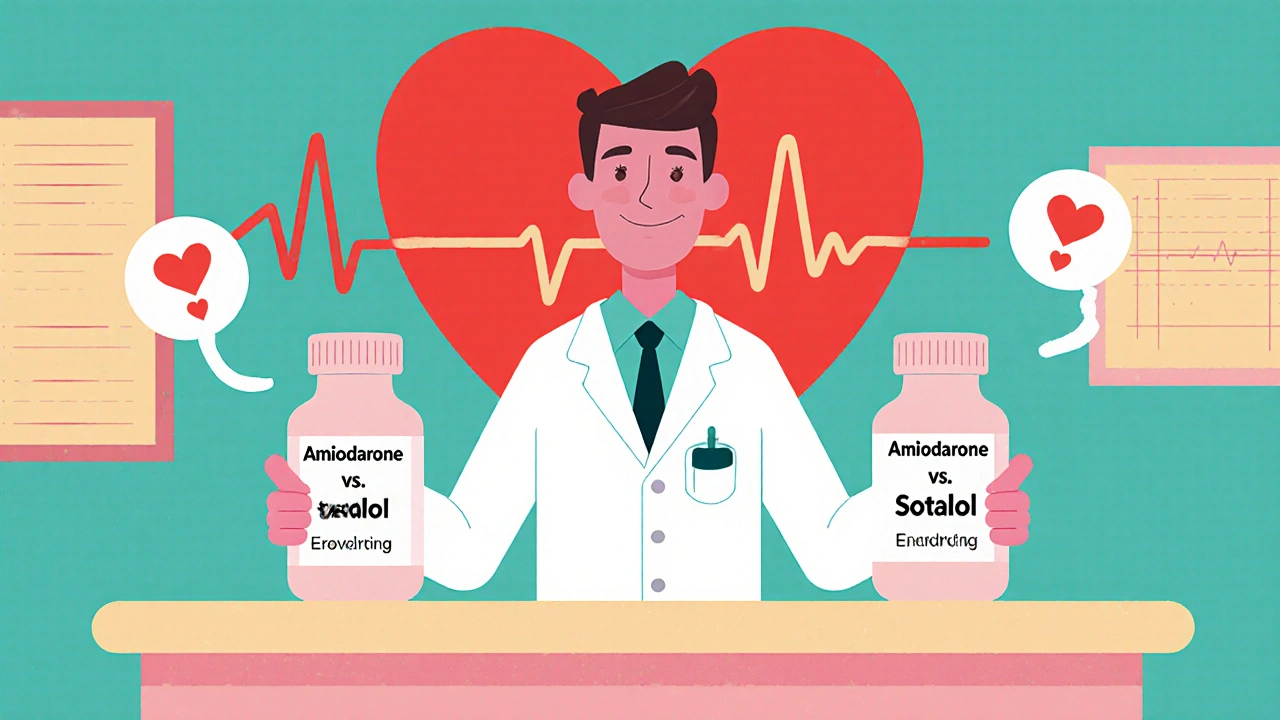Sotalol: Comprehensive Guide to the Antiarrhythmic Medication
When dealing with heart rhythm problems, Sotalol, a prescription drug that combines class III antiarrhythmic action with beta‑blocking effects. Also known as Betapace, it targets abnormal electrical signals in the heart while slowing heart rate. In everyday language, think of it as a two‑in‑one guard: it blocks the potassium channels that cause rapid beats and also blocks the beta receptors that accelerate the pulse. Sotalol is especially popular for managing atrial fibrillation and ventricular arrhythmias. beta blocker, a drug class that reduces heart rate and contractility by inhibiting adrenaline receptors works hand‑in‑hand with the antiarrhythmic side, creating a balanced approach to rhythm control.
Key Concepts and Related Entities
Understanding atrial fibrillation, an irregular, often rapid heart rhythm originating in the upper chambers is essential before starting Sotalol therapy. The condition can lead to stroke, heart failure, and reduced quality of life if left untreated. Sotalol’s class III label means it prolongs the QT interval by blocking potassium channels—this is why physicians monitor potassium levels, an electrolyte that influences cardiac repolarization closely. Low potassium can heighten the risk of dangerous torsades de pointes, a type of ventricular tachycardia. The drug also interacts with other medications that affect the QT interval, such as certain antibiotics and antidepressants, so a full medication review is a must. Dosage typically starts low and is gradually increased based on heart rate response and ECG findings, embodying the semantic triple: "Sotalol requires careful ECG monitoring", "ECG monitoring guides dosage adjustments", and "Dosage adjustments improve heart rhythm stability".
Beyond the core concepts, patients often wonder about side effects, lifestyle adjustments, and long‑term safety. Common complaints include fatigue, dizziness, and shortness of breath—signals that the beta‑blocking component may be a bit too strong for some individuals. If you notice swelling in the ankles or sudden weight gain, it could hint at fluid retention, prompting a check of kidney function. Because Sotalol can lower blood pressure, it’s wise to avoid abrupt position changes that could cause fainting. Alcohol, while socially tempting, can amplify the QT‑prolonging effect, so moderation is advised. On the positive side, many users report a noticeable reduction in palpitations and a steadier pulse, which translates to better exercise tolerance and fewer emergency room visits. This reflects another semantic link: "Sotalol improves exercise capacity" → "Patients experience fewer arrhythmic episodes" → "Overall cardiovascular health benefits increase". When you pair Sotalol with lifestyle measures—like a low‑salt diet, regular low‑intensity cardio, and stress reduction techniques—you boost its effectiveness and keep the heart’s electrical system in check.
Ready to dive deeper? Below you’ll find a curated selection of articles that break down Sotalol’s mechanism, compare it with other antiarrhythmics, explore safe buying tips for generic versions, and address common concerns like drug interactions and monitoring strategies. Whether you’re a new patient, a caregiver, or just curious about how this medication fits into broader heart‑health management, the posts ahead offer practical, easy‑to‑follow guidance that builds on the concepts we just covered.

Amiodarone vs Sotalol: Which Antiarrhythmic Wins for Arrhythmia Treatment?
Compare amiodarone and sotalol for arrhythmia treatment: mechanisms, dosing, side‑effects, monitoring, costs, and how to choose the right drug.